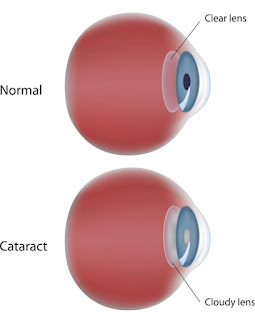Waterfall Surgery Complications
Waterfall medical procedure has made some amazing progress in the previous twenty years and keeping in mind that a moderately protected method, there still can be confusing after a medical procedure. A large portion of these complexities are minor ones however and can be amended, and don't stress excessively - the American Society of Cataract and Refractive Surgery reports that 98% of waterfall medical procedures are a triumph!
A waterfall is really an issue with the focal point of the eye that causes side effects like blurred shadings and haziness. The focal point of the natural eye is clear and accordingly, light can go through to our retina which makes vision. A waterfall structures on the focal point and seems as though an overcast spot, influencing our capacity to do regular exercises like perusing, driving, or finding in obscurity. To determine this waterfall medical procedure is performed and it eliminates the harmed part of the focal point and replaces it with a plastic embed called an intraocular focal point - fortunately once eliminated, a waterfall can't develop back.
There are no remedies or medications that can address a waterfall and in this manner, the solitary arrangement is a medical procedure. The medical procedure is never done on the two eyes around the same time and is regularly an outpatient system. Likewise, with all medical procedures, there is a danger cap disease as well as draining will happen, and on account of waterfall medical procedure, there is an expanded danger of the retina disconnecting. The most widely recognized confusion of waterfall medical procedure is something many refer to as back case darkness. This happens when the focal point case, which encompasses and secures the focal point of your eye, has cells from the external layer of the cornea that start to develop onto the container. This makes foggy vision which is once in a while more regrettable than what the waterfall caused. Fortunately, there is a laser treatment that amends this inconvenience which happens in around 20% of patients.
Another entanglement that might happen is the point at which the intraocular focal point that is embedded into the eye becomes separated or escapes position frequently making the patient experience twofold vision. This issue can be effectively remedied by your specialist who will essentially reposition the focal point. In the event that this turns into an issue a second time, the intraocular focal point can be sewn into place. It is significant for a patient to report any issues to their primary care physician quickly after seeing them on the grounds that with only a couple of months the embedded focal point 'develops' into place and turns out to be a lot harder for a specialist to reposition or eliminate.
Waterfall medical procedure accompanies some other minor difficulties like expanding or a saggy eyelid, however, these issues typically clear up with time and don't cause significant impedance with a patient's restored vision. The American Society of Cataract and Refractive Surgery report that 95% of patients have their vision reestablished to the level that it was at before the waterfall was created and meddled. Moreover, an undeniable level or premium intraocular focal point can really work on a patient's vision. So while confusions are intrinsic for any medical procedure, many individuals pick waterfall medical procedure as a protected and powerful approach to eliminate their waterfall and reestablish their sight.



Comments
Post a Comment